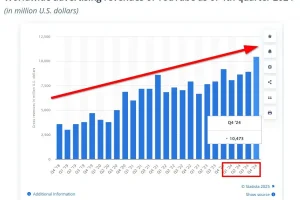When it comes to planning for retirement, there are various accounts you can utilize. The most popular option is a 401(k), but other plans exist as well.
These accounts offer tax benefits and the potential to significantly boost your future savings. But before making a decision about which type of account to invest in, there are several things you should take into consideration.
401(k) Plans
401(k) plans are employer-sponsored retirement savings and investing vehicles that provide significant tax advantages while helping you plan for the future. Employees can contribute a certain percentage of their salary into these accounts, which are automatically deducted from their paychecks.
Based on your financial objectives and risk tolerance, you have a range of investment options to choose from. These may include stocks, bonds and mutual funds.
457 Plans
If you work for a government or non-profit organization, then you may qualify to join a 457 plan. These programs offer various advantages that can help save for retirement.
The primary advantage of these plans is that they tend to be tax-favored. This means you won’t owe income tax on the money contributed until after you withdraw it in retirement.
Another major benefit is that these plans offer a wide selection of investment options, providing greater freedom when building your portfolio. You may choose stocks for growth, bonds for income or money market funds for principal protection.
403(b) Plans
A 403(b) plan is a retirement account available to public school employees and workers with 501(c)(3) tax-exempt organizations. Similar to 401(k) plans, it offers different advantages.
It’s essential to comprehend how these plans operate so you can maximize their benefits and start saving for your retirement now. They provide tax-efficient growth on retirement savings while helping manage current income taxes.
Many plans offer a selection of investment choices, such as mutual funds and annuities. Being aware of your options can make the decision-making process simpler and smoother.
Non-Employer-Sponsored Plans
If you don’t have access to a 401(k) or other employer-sponsored plan, non-employer sponsored plans may help you save for retirement. These programs, offered by some states, allow you to set money aside while enjoying tax advantages.
Individual Retirement Accounts, or IRAs for short, provide various investment options like stocks, bonds and mutual funds. Plus they’re tax-favored – meaning you don’t pay any federal or state income taxes when withdrawing the money from an IRA.
SEP Plans
If you’re a freelancer, contractor or own your own business, a SEP plan may be ideal for you. They’re easy to set up and offer high contribution limits that far surpass traditional IRAs.
With a SEP, you can select from several mutual funds and have contributions automatically deposited into your account on a regular basis. This passive investment strategy has major advantages during volatile markets since dollar-cost averaging takes place with each deposit.
Profit-Sharing Plans
Profit-sharing plans are incentive programs designed to reward employees for superior performance by giving them a real stake in the company. They may take the form of cash bonuses or contributions to tax-favored retirement accounts.
Contributions made to these accounts grow tax-deferred, similar to contributions in a 401(k). Once you retire, you can access these funds as either one lump sum or in periodic payments.
Profit-sharing plans, like other qualified retirement plans, require annual filings and participant disclosures. Furthermore, they must pass nondiscrimination testing and adhere to contribution limits set by the IRS.
Employee Stock Ownership Plans
If you’re looking to save for retirement, employee stock ownership plans (ESOPs) are an ideal option. They provide tax advantages to both employers and employees alike, which could significantly increase your savings levels.
ESOPs work by creating trusts in which companies deposit either new shares of company stock or cash to purchase existing ones. After that, those shares are allocated to individual employee accounts based on compensation and years of service.
After retirement, company shares are typically repurchased by the firm and returned to employees in either cash or a combination of both.








